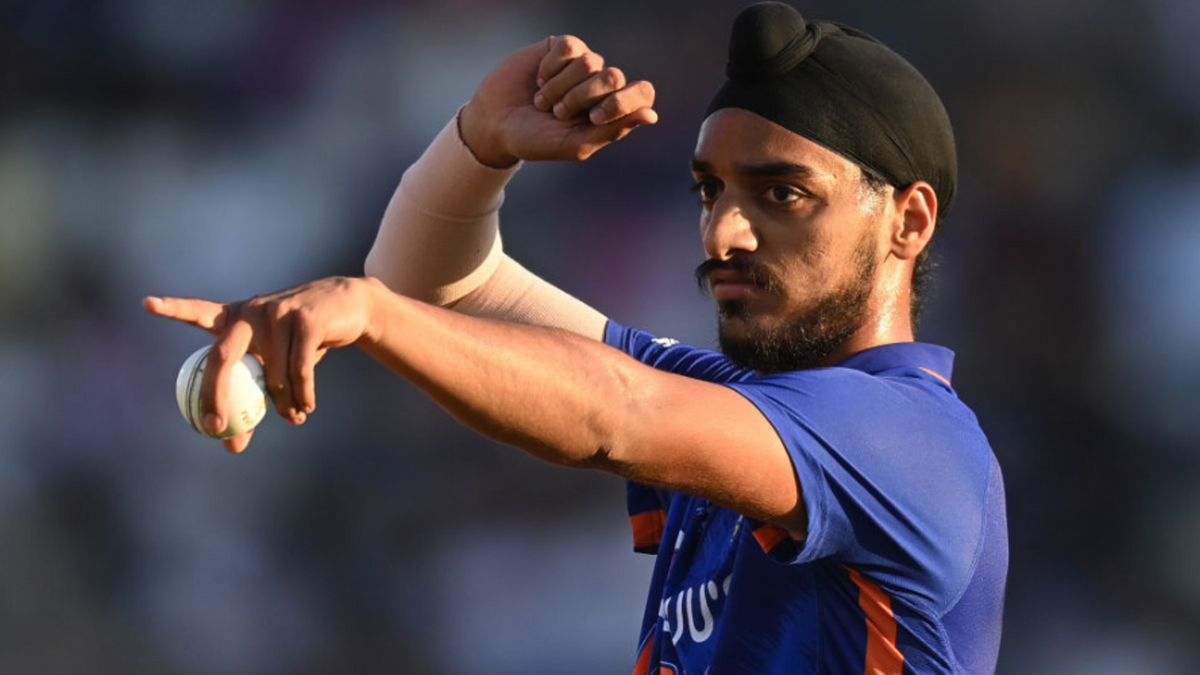
Arshdeep Singh did not play the T20I series against Australia, and his importance to India’s T20I side cannot be overstated, writes Shashwat Kumar.
India ended the 2022 Asia Cup with more questions than answers. At the forefront of that queue was their death-bowling. In Jasprit Bumrah’s absence, they struggled and went down in games that they should have won. Bumrah has since returned to the fold, as has Harshal Patel.
That, though, has not necessarily translated into an upturn in fortunes. The pitches during the Australia series were very conducive to stroke-making. But with the T20 World Cup not far away, India perhaps need to evolve a mechanism to keep things tight at the death, irrespective of the opposition they face and the conditions they encounter. And that is where Arshdeep comes into the equation.
As things stand, it seems that Bhuvneshwar Kumar, Bumrah and Hardik Pandya will be a part of India’s first-choice bowling unit. Not many bowlers are better than Bhuvneshwar in the powerplay. Bumrah is one of the best pacers in the shortest format and Hardik provides immense value as an all-rounder. Axar Patel, too, seems to have strengthened his case post a Player of the Series display against Australia. Yuzvendra Chahal has not been at his best lately but it seems unlikely that India will go into their T20 World Cup campaign without a wrist-spinner in the mix.
So, it is most probably going to be a toss-up between Arshdeep and Harshal for the final bowling spot. Both specialise in bowling towards the end of an innings and much of their reputation has been built on their success during that phase. In recent times, though, both have vastly contrasting records, and it becomes clear who should be India’s first-choice death-bowler.
Since the start of 2022, Arshdeep has bowled 85 balls at the death in T20I cricket. He has only given away 6.7 runs per over, the best among bowlers from Test-playing nations with a 50-ball cutoff. He has picked up a wicket every 8.5 balls and has averaged 9.5. Harshal, on the other hand, has shipped 11.45 runs per over at the death in T20Is this year. The average (25.66) and strike rate (13.44) are considerable downgrades too. In all Twenty20 cricket this year, Harshal has conceded 10.37 runs an over at the death, whereas Arshdeep has only gone for 7.16.
Even during the series against Australia, Harshal only held his own in the final over he bowled at Hyderabad. He bowled just two overs that night. Bhuvneshwar, who has not been great at the death, was preferred over him, illustrating why Arshdeep is so important to the Indian T20I team.
Death-bowling exploits aside, Arshdeep seems the better-rounded T20I bowler of the two. While Harshal has primarily bowled towards the end of an innings in the past couple of years, Arshdeep can bowl well with the new ball, despite being a tad expensive at the Asia Cup.
At the same time, India may consider the batting muscle Harshal adds to the line-up. He opens for his state in domestic cricket and can hit boundaries. So far in his T20I career, however, he has batted on only nine times in 20 matches. He has faced 45 balls – in other words, five balls per innings while is batting in less than half of the games that he is playing.
Arshdeep (7.38) and Harshal’s (9.27) T20I economy rates for 2022 make for interesting reading. If both were to bowl their full quota of overs in a particular T20I, Arshdeep would concede about 29.5, as opposed to Harshal’s giving away 37.5 runs. The difference is eight runs an innings. Because Harshal bats every alternate game, he would concede 16 runs before getting a chance to bat. Based on his T20I career (albeit a small sample), he will only get five balls to do so.
Cricket is not as black-and-white as the aforementioned calculations, but it does illustrate that India should not make the mistake of playing a bowler based on his batting abilities, especially considering he might not get an opportunity to bat altogether.
Harshal’s primary strength, his slower ball, may not be as effective in Australia – though the dipping yorker will almost certainly work. The bigger dimensions could come to his aid, but as the games in Mohali and Nagpur showed, they may not be enough. The batters seem to pick his variations a lot better.
Arshdeep, on the other hand, can slant the ball across right-handed batters and can restrict them to play on one side of the ground. He has an exceptional yorker and his deceptive bouncer could be useful on lively Australian pitches.
Hence, it seems the case for Arshdeep being included ahead of Harshal is compelling. Harshal distinguished himself at the 2021 IPL and picked up a lot of wickets at the start of his T20I career too. Over the past few months, though, he has struggled for consistency and injuries as Arshdeep grew from strength to strength.
Bhuvneshwar and Hardik have been rested for the upcoming T20I series against South Africa. So, both Arshdeep and Harshal will get a chance to stake their claim. Don’t be surprised, though, if Arshdeep emerges as the front-runner to take that final bowling spot in this unit, ahead of Harshal and possibly as India’s best death-bowler.








